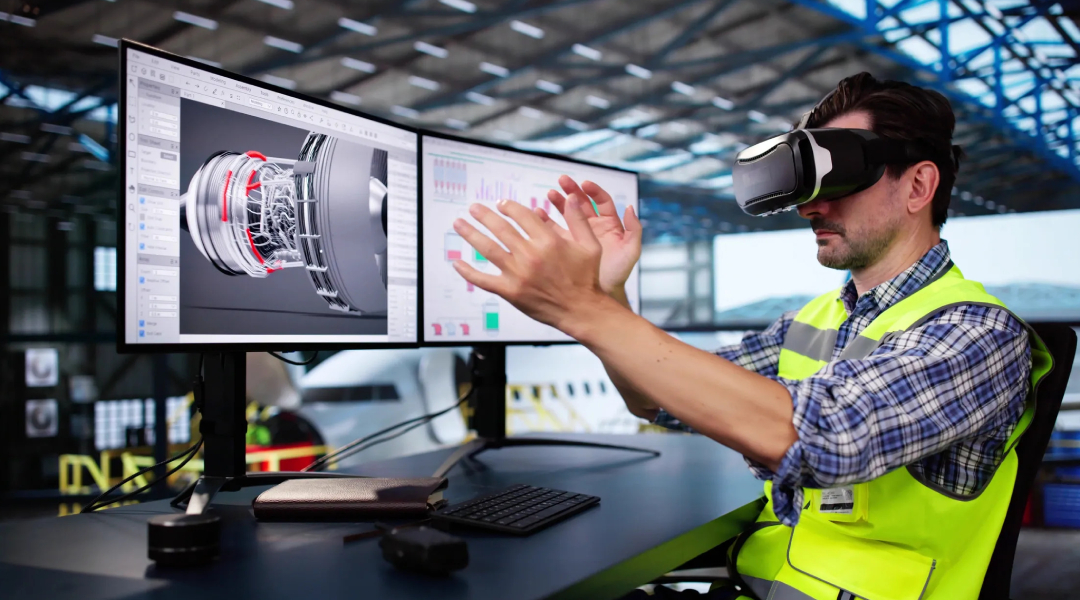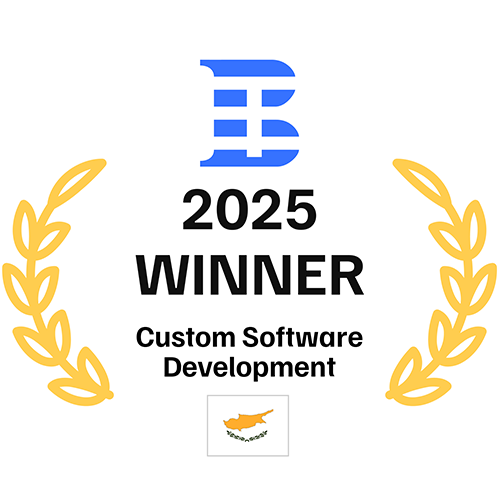Gamified training provides a direct approach to enhancing learning, skill development, and on-the-job performance. Instead of relying on passive lessons, many teams now use structured game elements to create active learning experiences. Mechanics such as points, progress bars, feedback, and task-based challenges are designed to support real outcomes, not just entertainment.
Getting results from this method requires more than theory. You need clear goals, thoughtful systems, and tools that support behavior change over time. That is where gamification development services play a critical role. They help convert rough training ideas into usable, measurable programs that align with business goals.
A common problem is content that looks impressive but fails to deliver results. Low engagement, unclear rewards, and confusing rules often lead to lost time and budget. The solution is to connect game mechanics with actual work tasks and reward systems that reflect real performance.
This article provides straightforward steps and examples. You will see what works, what fails, and how to avoid common mistakes. The goal is not just to make training more interesting but to make it more useful, measurable, and effective in daily operations.
Why Organizations Are Turning to Gamified Training
Companies now expect training to produce measurable behavior changes, not just checkboxes on a schedule. As roles become more complex, passive learning methods are no longer enough. Interactive formats, especially those shaped by gamification in learning development, respond better to how people actually retain knowledge and apply it.
Gamified training keeps employees focused, reduces repeat errors, and supports faster skill adoption. It also provides data for tracking progress in a way that traditional formats often miss. Businesses are shifting from theory-based sessions to task-driven systems that deliver outcomes from day one.
What Makes Traditional Training Ineffective in 2025
Training programs that rely on lectures, static e-learning, or outdated manuals no longer match how people learn or perform. Several issues continue to weaken the results of these approaches.
Main reasons why traditional training fails today:
- Low engagement. Learners often forget material quickly when sessions lack interactivity.
- No performance link. Lessons do not clearly connect to daily job tasks.
- One-size-fits-all approach. Every employee gets the same material, regardless of skill or experience.
- No feedback loop. Learners cannot adjust their behavior without immediate feedback.
- Poor tracking. Managers struggle to measure progress in real time.
Gamified systems replace these gaps with goal-based progress, real-time feedback, and flexible learning paths. Employees move at their own pace but still reach consistent standards. Visual performance metrics make it easier for trainers to adjust content based on real usage. That’s why many companies are removing traditional formats entirely.
Why Gamify Training Now Matters More Than Ever
Training built around game mechanics now plays a central role in business growth. It increases motivation, cuts training time, and reduces knowledge gaps between teams. In 2025, companies face tight timelines, shifting roles, and new technologies, all of which demand faster learning cycles.
Three critical reasons to gamify training today:
- Fast onboarding. Gamified platforms help new hires achieve productivity targets more quickly.
- Retention improvement. Employees remember more when they interact with tasks rather than just observing them.
- Behavior tracking. Managers see clear, structured data tied to real employee actions.
Gamification in business is no longer optional when teams are spread across regions, and tasks are more technical. Smart training tools reduce the need for repeat sessions, freeing up time and budget. Instead of running sessions again and again, teams rely on digital systems that adjust automatically based on learner performance. That provides businesses with both scale and speed without compromising training quality.
Understanding the Core — What Is Gamified Training?
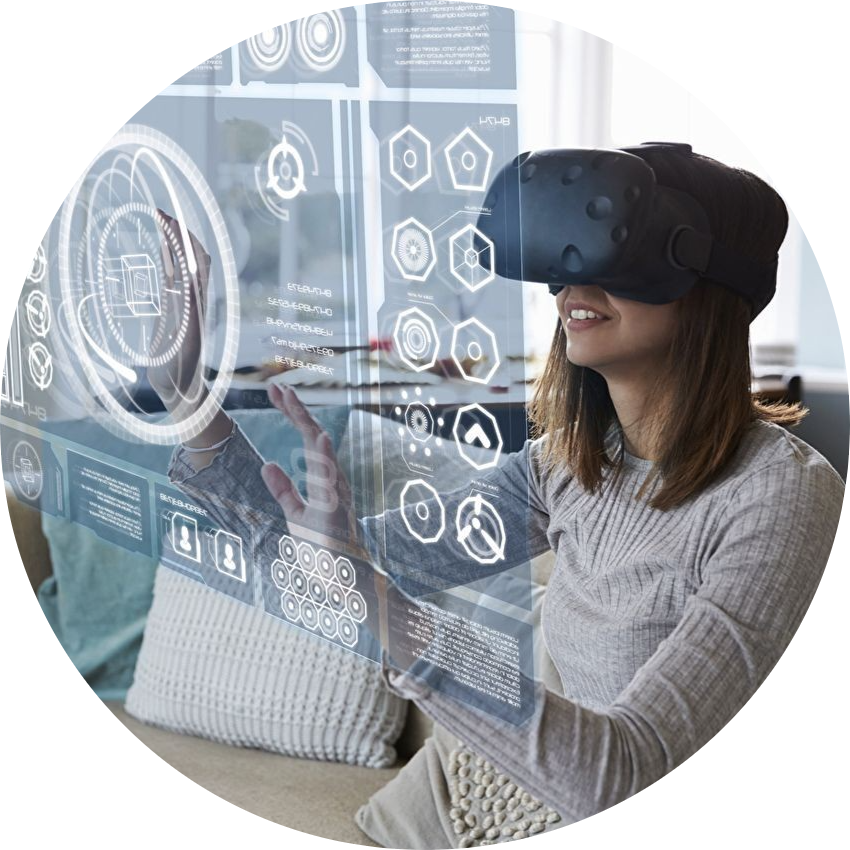
Gamified training uses structured game mechanics to improve how people learn and apply skills. Instead of passively watching content or reading slides, employees interact with challenges, earn points, complete levels, and receive feedback. This structure keeps learners active and focused while reinforcing correct actions through repetition and reward. The approach works across industries, helping companies improve knowledge retention and real-world performance. Unlike standard training, gamified systems are built around doing, not just knowing.
Game Mechanics Used in Corporate Environments
Corporate teams benefit most from game mechanics that are clear, purpose-driven, and aligned with work goals. The aim is not to entertain but to build habits and reinforce procedures.
Common mechanics include:
- Points and scoring. Reinforce correct behavior by giving clear value to each task.
- Levels and progression. Break down training into steps with increasing difficulty.
- Immediate feedback. Correct or reward actions instantly to drive real-time learning.
- Leaderboards. Promote healthy competition and visibility of strong performance.
- Time-based challenges. Encourage fast thinking and simulate pressure-driven environments.
- Badges and achievements. Mark milestones to track personal growth and task completion.
These tools are effective only when matched with meaningful tasks. If your program relies on realistic 3D scenarios and score-based interactions, consider our simulation game development expertise to build systems that scale across the enterprise. Companies that deploy them without clear goals often fail to see results. Success depends on selecting mechanics that mirror real job expectations and tracking progress with measurable metrics.
Examples of Gamified Training in Practice
Different types of gamification suit different business needs. Some approaches focus on personal progress, while others encourage team collaboration or direct task simulation.
Examples include:
- Simulation-based training. Workers complete safety tasks or operate virtual equipment with scoring based on accuracy and timing.
- Microlearning games. Short lessons are turned into quizzes with points, lives, and streaks to maintain focus.
- Sales challenges. Reps earn rewards by completing client calls, updating CRMs, or closing deals.
- Compliance walkthroughs. Interactive scenarios test employee choices in regulated environments.
Types of gamification applied:
- Structural gamification. Adds points, badges, and rewards to an existing process.
- Content gamification. Turns training material itself into interactive tasks or game-like formats.
Each method works best when tied directly to outcomes. Without that link, the game becomes a distraction rather than a tool for performance improvement.
Does Gamified Training Get Results?
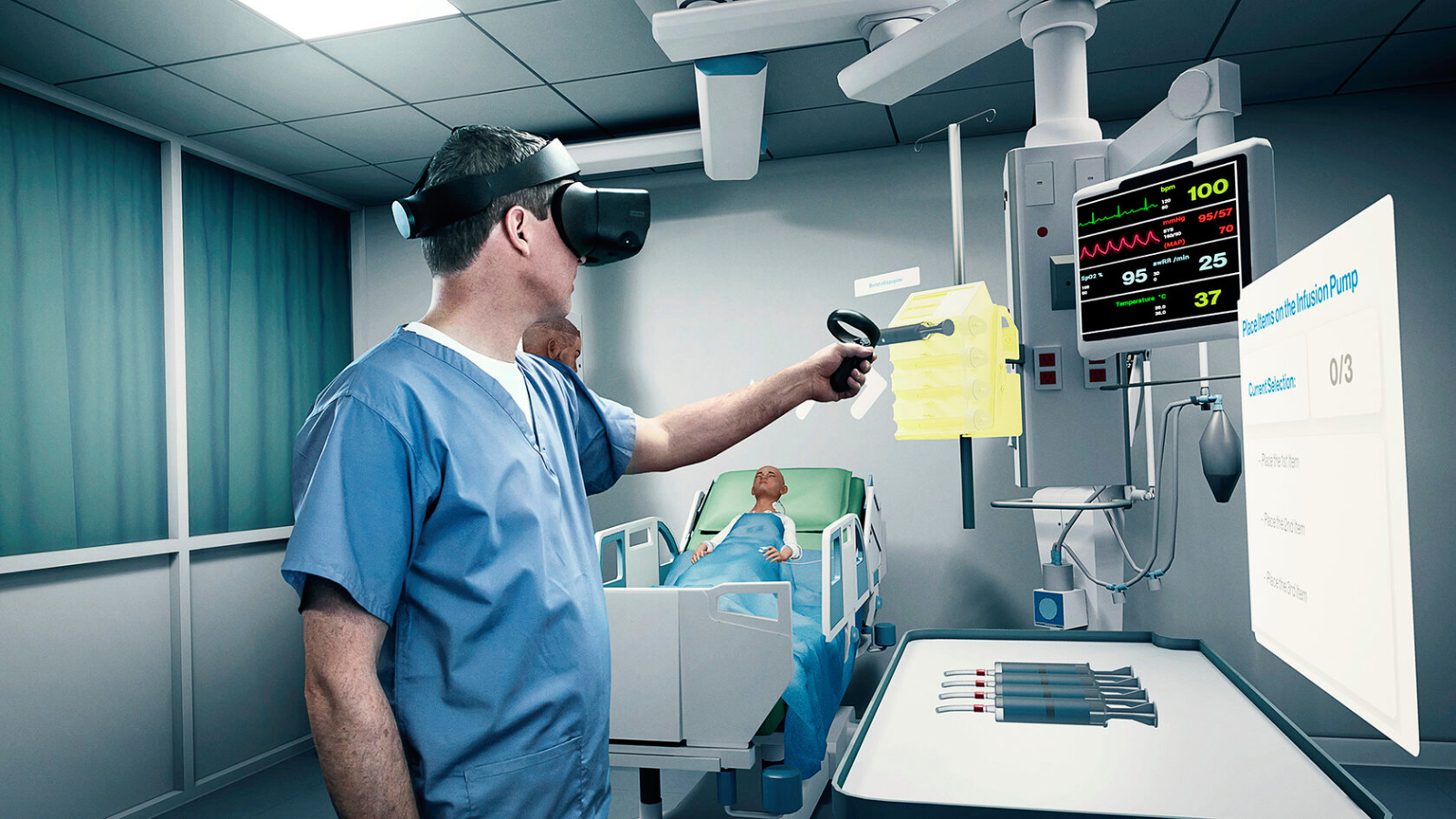
Gamified training delivers results when used with clear goals and well-structured content. Organizations report stronger employee focus, faster completion of learning tasks, and fewer repeated errors. Unlike passive formats, gamified programs keep learners engaged by involving them in task-based actions.
Results become visible through performance dashboards, behavior tracking, and retention scores. Well-built programs improve more than just motivation; they lead to measurable changes in productivity, decision-making, and job readiness across departments.
Measurable Outcomes: Productivity, Engagement, Retention
Gamified training works because it transforms abstract goals into direct actions. Game mechanics like progress bars, timed responses, and interactive choices create urgency and clarity in the learning process.
Improvements seen in companies using gamification elements in training:
- Higher completion rates. Learners finish programs more often and on schedule.
- Improved focus. Feedback and challenge systems reduce distraction and support the active effort.
- Better retention. Interactive formats help learners remember processes longer.
- Increased productivity. New hires reach task proficiency in fewer days.
- Ongoing engagement. Even routine compliance tasks become less of a burden when gamified.
Outcomes can be tracked by task accuracy, time to complete, and follow-up assessments. These data points allow companies to refine training while ensuring long-term skill development.
Evidence from Studies and Enterprise Use Cases
1. Gamified Sales Training Outcomes:
A study highlighted that gamified learning can improve student performance by over 34%. Additionally, Autodesk's implementation of gamified sales training resulted in a 15% rise in conversions.
2. Engagement and Retention Improvements:
Research shows that gamified training can lead to a 60% increase in engagement and improve skills retention by 40%.
3. Corporate Use Cases:
- A case study on gamification in corporate eLearning reported an increase in completion rates from an average of 32% to 67%.
- A study conducted by the University of Warwick found that gamified learning increases engagement by up to 50%.
- Research from McKinsey shows that gamified learning can improve knowledge retention by up to 40%.
These sources provide empirical evidence supporting the effectiveness of gamified training in various corporate settings.
Gamified Emergency Training for Gap Inc.
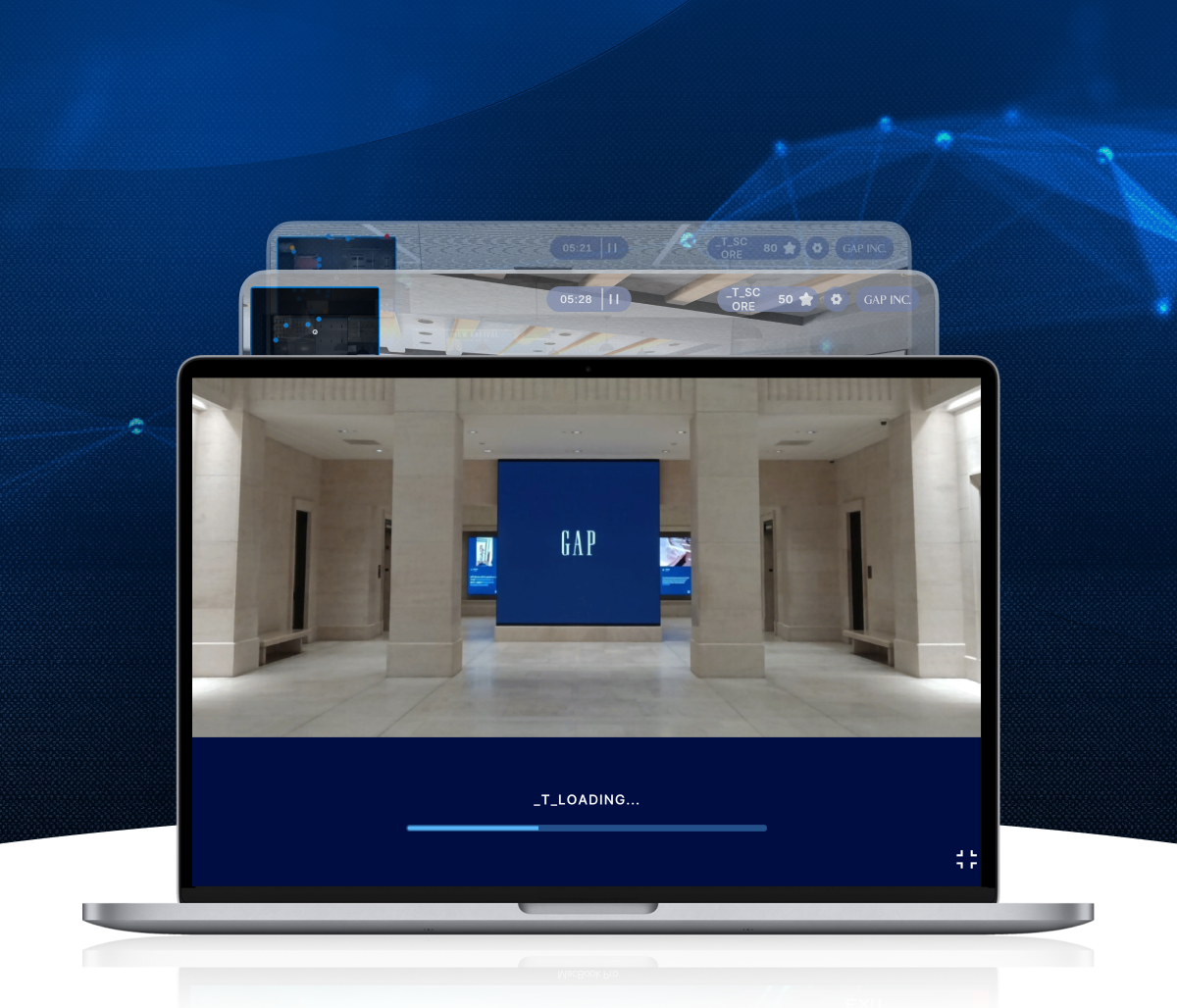
Discover how Program-Ace used gamification mechanics in an active-shooter virtual training for Gap Inc. Points, penalties, and timed decisions drive deeper employee engagement.
Benefits of Gamified Training for Workforce Development
Gamified training offers practical value across multiple stages of workforce development. It helps employees learn faster, remember more, and stay engaged during repetitive tasks. Clear objectives, visible progress, and timely rewards keep learners focused and involved.
As job requirements evolve, companies need scalable training methods that still feel personal and relevant. Gamification delivers that through structured tasks and measurable growth. It also supports hiring, onboarding, and long-term skill advancement without overloading training teams.
Boosting Knowledge Retention Through Repetition and Rewards
Game-based learning improves memory by linking knowledge to active tasks. Instead of reading rules or watching long videos, learners respond to challenges, make decisions, and earn rewards tied to correct actions. That repetition helps them retain core material faster.
Gamification techniques that improve retention:
- Spaced repetition. Training tools revisit key topics over time to support long-term memory.
- Reward cycles. Immediate reinforcement boosts attention and highlights progress.
- Failure recovery. Learners get a second chance to try tasks, strengthening recall.
- Mini-scenarios. Short, realistic cases increase personal relevance.
Recruitment gamification also benefits early-stage development. Companies use skill-based challenges or scenario games during hiring to test how candidates react, solve problems, and absorb information. The result is a smoother transition from selection to onboarding, with stronger candidate insight before hiring decisions are made.
Encouraging Initiative and Motivation at Scale
Traditional training often forces participation. Gamified systems, on the other hand, create environments where learners return on their own. They engage with training tools more frequently, complete optional challenges, and apply new skills without extra pressure.
Key drivers behind increased motivation:
- Progress visibility. Learners see exactly where they stand and what comes next.
- Achievement unlocks. Reaching goals feels more satisfying when marked by badges or ranks.
- Peer benchmarks. Leaderboards and team points raise engagement without needing supervision.
- Autonomy. Self-paced structures allow employees to train when and how they prefer.
At scale, this leads to higher participation rates and reduced dependency on constant oversight. When learners feel ownership over the process, they move faster, make fewer errors, and stay interested across even the most routine subjects.
How to Gamify Training Effectively
Effective gamified training starts with a clear structure. Companies need to connect learning goals with specific game mechanics that reinforce real skills. The system must reflect actual work tasks, not just add points or badges for the sake of appearance. Design must serve a function. To succeed, you also need the right platform, realistic expectations, and a rollout strategy that includes feedback and testing. Each part of the system must support both performance improvement and learner engagement.
Aligning Game Mechanics with Learning Objectives
Game mechanics only work when they reinforce real tasks. Without alignment, they become distractions. Matching the structure of the game with actual outcomes ensures training stays focused and relevant.
Effective alignment strategies include:
- Task-based scoring. Assign points to actions that reflect job priorities.
- Progression tied to real milestones. Unlock content only when users show task mastery.
- The feedback that teaches. Use incorrect answers or missed tasks as learning prompts.
- Reward structure based on outcomes. Recognize not just activity but improvement and speed.
For example, a logistics team might use timed package-sorting simulations, while a support team could train with branching scenarios based on customer interactions. Mechanics must always reflect actual challenges faced on the job. That connection turns games into practical learning tools.
Choosing Between In-House and External Gamified Training Solutions
Building in-house systems gives you full control but demands time, budget, and technical skill. External solutions provide faster deployment and expert guidance but may require compromise on customization.
Compare both approaches:
- In-house development. Best for large companies with internal teams and long-term training roadmaps.
- External services. Ideal for small to mid-sized teams needing expert input and faster results.
- Hybrid models. Use external platforms with internal content for balance between control and speed.
- Budget consideration. Internal builds require up-front investment, while external models often run on subscriptions or licensing.
Gamification development services often include user analytics, pre-built mechanics, and support for scaling. For teams lacking internal expertise, they reduce risk and accelerate time to results.
Avoiding Common Pitfalls When Implementing Gamified Content
Gamified training can fail if the design ignores user needs or overemphasizes rewards. Shiny visuals won’t fix the poor structure. Several mistakes occur repeatedly in failed programs.
Frequent issues to avoid:
- No link to outcomes. Mechanics that don’t reflect job duties lead to confusion.
- Overuse of rewards. Excessive points or badges make the system feel shallow.
- Complex interfaces. The confusing design turns users away early.
- No feedback loop. Learners need guidance, not just scores.
- Lack of updates. Stale content reduces repeat engagement.
- User-based content delivery. Adjust challenges based on past performance or role.
- Immediate response. Notify users of errors or successes right after an action.
- Progress tracking. Let learners see milestones, scores, and next steps at any time.
- Custom challenges. Allow task variations based on department or experience level.
- LMS sync. Pulls user history, assigns content, and stores results automatically.
- CRM link. Tracks learning progress alongside sales activity or customer data.
- Onboarding tie-in. Aligns first-day tasks with gamified paths for quicker adaptation.
- HR systems. Updates records based on achievements or certifications earned.
- Realistic conditions. Learners practice in simulated environments that match real job sites.
- Reduced risk. Users can repeat dangerous tasks without physical exposure.
- Active recall. Virtual actions improve memory retention better than passive formats.
- Performance data. The system tracks timing, accuracy, and decision-making.
- Safety. Electricians use VR to learn lockout/tagout procedures and test voltage in simulated arc flash environments.
- Logistics. Warehouse staff train in virtual replicas of real layouts, practicing picking, loading, and route timing.
- Healthcare. Nurses complete virtual emergency response drills, learning how to follow protocols under pressure.
- Executive leadership development. Complex judgment and strategy work do not lend themselves to simple game scores.
- Ethics and compliance discussions. Topics like harassment prevention need space for reflection, not reward-driven progress.
- Advanced technical research. In fields like R&D, learning is often unstructured and driven by exploration rather than linear progress.
- Emotional intelligence training. Social learning depends on human interaction and feedback, not competition.
- Points over purpose. Learners chase scores instead of understanding the material.
- Distraction from content. Visuals or mechanics overwhelm the core message.
- One-size-fits-all rewards. Generic badges do not motivate experienced staff.
- Reduced long-term impact. Skills may not transfer to real-world tasks.
- Cost per learner. Compare the expense of gamified training to other methods. Include development, licensing, and time required.
- Completion rates. High rates indicate that learners stay engaged and finish assigned material.
- Proficiency gains. Test users before and after training to measure skill improvement.
- Time to proficiency. Track how quickly new hires or promoted staff reach required performance levels.
- Error rates post-training. Fewer on-the-job mistakes show the training improved real-world outcomes.
- LMS reporting features. Most learning platforms track completions, scores, and time on task.
- Built-in analytics dashboards. Gamified training platforms often include detailed user behavior data.
- Pre- and post-assessments. Comparing test results helps measure actual learning gains.
- Operational KPIs. Connect training outcomes to business systems such as CRM or quality control software to monitor real-world impacts.
- Feedback surveys. Gather learner insights on usefulness and relevance to confirm that training supports job needs.
- AI-driven content sequencing. Systems select tasks based on learner strengths and weaknesses.
- Dynamic feedback. AI analyzes actions and gives detailed, personalized advice during training.
- Scenario branching. Simulations present new challenges based on previous decisions.
- Real-time adjustment. Difficulty shifts automatically to keep learners at the edge of their skill level.
Always test content with small groups before rolling it out to the full audience. Collect feedback, monitor learner behavior, and adjust instruction based on their actions. Gamified training must stay relevant and grounded in real tasks to produce lasting results.
Key Elements of a Successful Gamified Training Solution
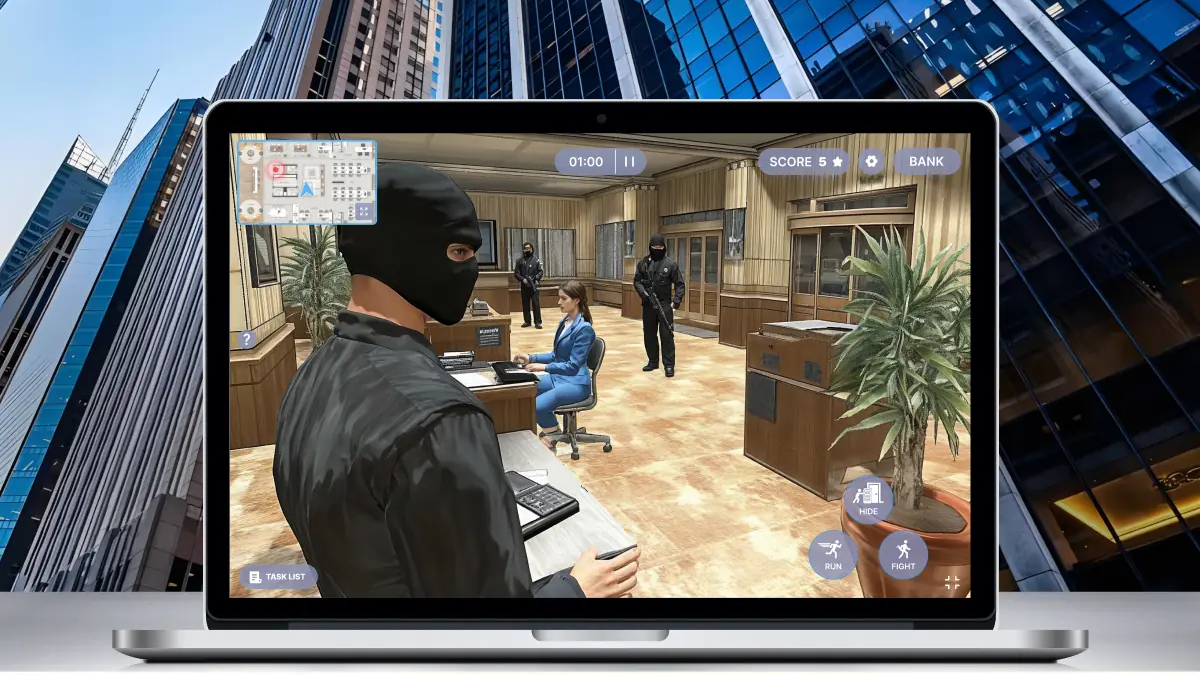
A strong gamified training system is more than points and badges. It needs features that support learning goals, track progress, and respond to user behavior. Personalization, real-time feedback, and clear progress indicators all help learners stay focused and improve steadily. Integration also plays a major role. Connecting your training platform to tools like LMS, CRM, or onboarding software allows the system to reflect actual workflows and deliver results without breaking daily routines.
Personalization, Feedback Loops, and Progress Visibility
Learners improve more quickly when training adapts to their individual needs. Personalized content keeps users focused, while real-time feedback allows instant corrections. Progress indicators show what’s done and what remains, reducing confusion.
Core functions to include:
Without these, systems feel generic and lose attention quickly. When feedback and visibility are combined with meaningful tasks, users stay engaged longer and repeat fewer mistakes. Personalization simply needs to align with the way people actually work and learn.
Integration with LMS, CRM, and Onboarding Tools
Gamified training works best when connected to the systems your teams already use. Standalone tools can isolate learning from real tasks, which weakens outcomes.
Why integration matters:
Integrated tools reduce manual work and keep data consistent across platforms. They also enable progress in training to impact other metrics, such as client interactions or compliance status. When gamified learning is integrated directly into operational systems, it becomes an integral part of the job.
The Rise of Gamified Virtual Training Experiences
Virtual training with built-in game mechanics is growing fast across industries. It combines structured challenges with immersive environments to increase realism, focus, and task repetition. Unlike standard video content, these programs let learners move, act, and react within a virtual space that mirrors real job settings. As more companies invest in AR and VR tools, gamified virtual training becomes a practical method for preparing teams to work safely, accurately, and efficiently from the start.
How AR/VR Make Training Immersive and Memorable
Augmented and virtual reality enables employees to interact with digital objects in real time. That interaction builds memory through action, not observation. Combined with gamified rules, AR/VR environments enable users to repeat tasks, receive instant feedback, and track their performance as they progress.
Main benefits of combining AR/VR with gamified training:
Virtual settings support the practice of complex tasks, such as electrical procedures or medical protocols, without requiring physical equipment. That saves costs while improving learning depth.
Examples from Safety, Logistics, and Healthcare Sectors
Gamified virtual training is now used to prepare workers for high-risk, high-precision roles. These simulations replace long lectures with focused, hands-on learning.
Use cases include:
Each scenario uses points, timed tasks, and feedback to reinforce correct actions. Gamified systems track completion, mistake rates, and improvements over time. For employers, this reduces onboarding costs and improves job readiness. For learners, it makes training easier to understand and apply without requiring real-world exposure.
Program‑Ace Elevates Banking Security with Advanced Employee Simulation
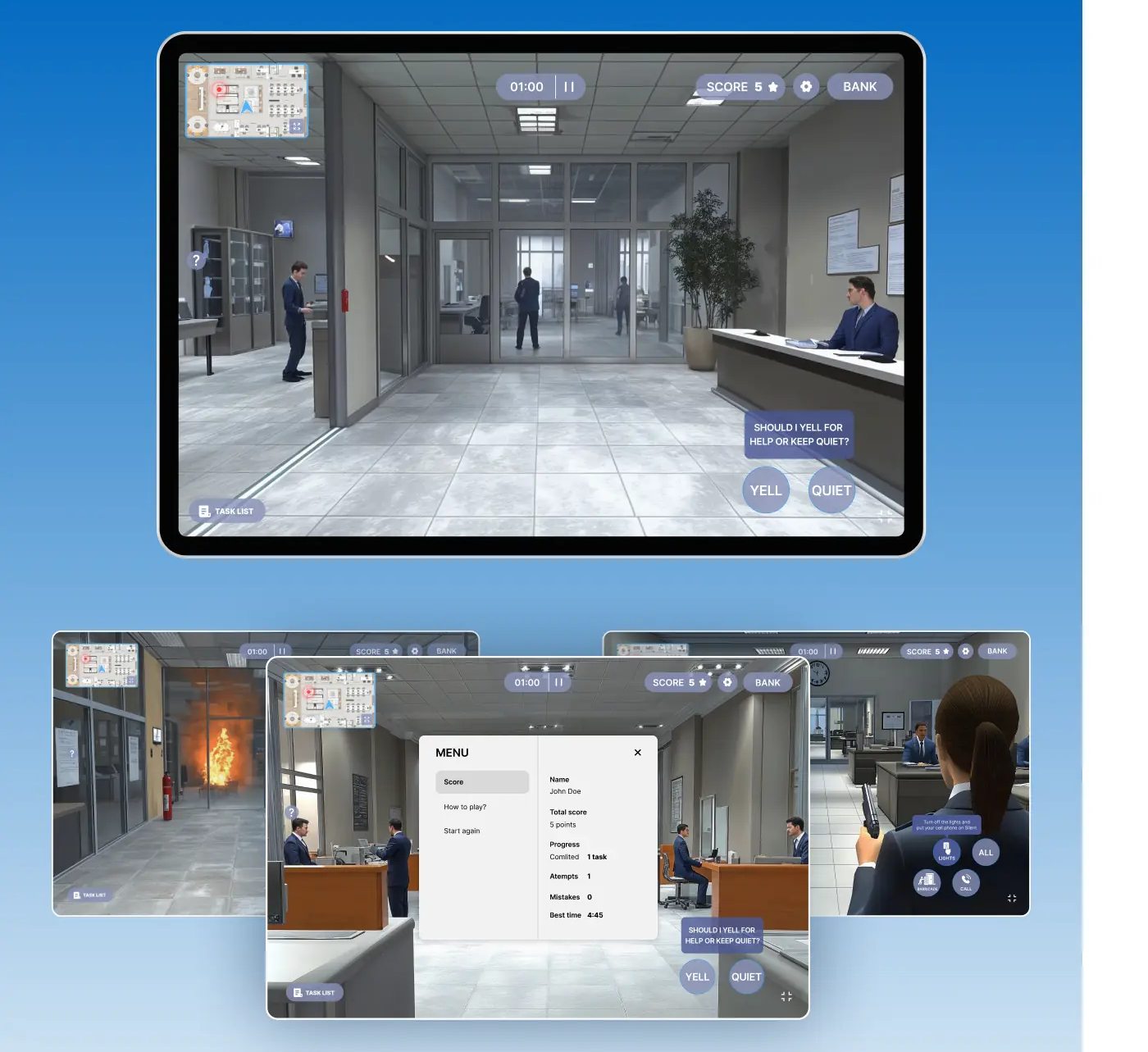
Experience how our team crafted a WebGL‑based, interactive security training platform specifically for banking staff, featuring realistic active‑shooter and emergency scenarios. Discover its immersive environments, dynamic decision prompts, gamified scoring, and compliance‑tracking capabilities.
When Not to Gamify Training
Gamified training is not the right fit for every situation. Some roles or topics require reflection, discussion, or ethical reasoning that cannot be reduced to points or levels. In other cases, adding game mechanics may distract from serious content or create false incentives. Choosing when to apply gamification should always depend on the learning goal, the nature of the content, and the expectations of your audience. Thoughtful selection prevents wasted effort and protects training quality.
Roles and Scenarios Where Gamification May Not Fit
Some training content requires deep thought or sensitivity, and game elements can feel inappropriate or disruptive.
Examples of where gamification may not fit:
If a task’s success depends on discussion, open-ended thinking, or moral reflection, gamification risks trivializing the process. In such cases, structured conversations or mentorship are often more effective.
The Risk of Over-Gamification and Shallow Engagement
Adding too many game elements can backfire. Users may focus more on earning rewards than on mastering content, leading to shallow engagement.
Common signs of over-gamification:
To avoid this, always start with the learning goal. Use only game mechanics that reinforce desired behaviors. Keep visuals and rewards subtle. Training should feel purposeful, not gimmicky. Well-designed gamification enhances learning rather than becoming the focus itself.
Measuring the ROI of Gamified Training Programs
Companies need clear proof that gamified training delivers value. Measuring ROI involves more than counting participation or tracking points. Success must be linked to real business outcomes, such as cost savings, skill improvement, and faster time to proficiency. Effective programs set benchmarks before launch and collect performance data throughout. By focusing on key metrics, organizations can justify their training investments and fine-tune programs to achieve even stronger results in future learning cycles.
Metrics That Matter: Cost, Completion Rates, and Proficiency
Several metrics help assess the true value of gamified training. Focusing on these numbers prevents teams from mistaking fun for effectiveness.
Metrics to track:
By setting targets for these metrics, companies can move beyond superficial engagement and prove training is producing measurable value.
Tools for Tracking Performance and Learning Impact
Proper tracking tools ensure that performance data is accurate, useful, and actionable.
Effective tools are:
Combining platform data with external performance measures gives a full view of ROI. Organizations that track only participation risk missing deeper insights into how training affects work quality and efficiency.
Future Trends in Gamified Training and Digital Learning
Gamified training is evolving rapidly as digital learning technologies continue to advance. Companies now expect training systems to adapt in real time, reflect real-world complexity, and personalize learning to individual needs. AI, advanced data use, and realistic simulations are becoming standard tools for creating more profound and more scalable experiences. Forward-thinking organizations are already building the next generation of learning environments.
Adaptive AI, Real-Time Simulation, and Dynamic Scenarios
Adaptive AI now helps tailor training experiences to each learner. Instead of fixed paths, training adjusts based on performance and choices. Real-time simulation adds another layer by allowing users to practice under varying conditions that reflect the unpredictability of actual work.
Emerging capabilities include:
These features make training more engaging and improve long-term retention by continually challenging users. The focus moves from one-time completion to ongoing skill growth.
The Growing Role of Data in Shaping Learning Paths
Data now plays a central role in shaping gamified training programs. Advanced platforms gather detailed information on how learners interact with content and how well they apply new skills in real situations. This data helps optimize learning paths by showing which content sequences lead to the best outcomes. It also allows trainers to identify learners who need additional support and adjust the program accordingly.
Usage patterns reveal which parts of the training are effective and which may cause confusion, helping teams refine content over time. Learners benefit from personal progress reports that highlight strengths and suggest areas for improvement. At the organizational level, managers gain insights into how training impacts team performance, making it easier to align learning strategies with business goals. With this data-driven approach, companies can move beyond generic training and deliver experiences that adapt continuously to meet evolving needs.
Need a gamified training solution for your team? Let’s connect.
Choose the Right Gamified Training Solution with Program-Ace
Program-Ace helps organizations turn training goals into measurable outcomes with custom gamified solutions. As an innovative solutions integrator, we design, build, and implement training systems that support real performance improvement. Our team aligns game mechanics with learning objectives to ensure engagement, skill retention, and behavior change.
We also integrate training tools with your existing LMS, CRM, and onboarding systems, creating a seamless learning environment. Program-Ace develops AR, VR, and web-based training experiences that meet the needs of both large enterprises and fast-growing teams.
If you want to enhance workforce readiness, speed up onboarding, or improve compliance outcomes, contact us. We can help you choose the right strategy, select the best technologies, and create a gamified training program that delivers measurable business value from day one. Contact us to start building your next-generation learning solution.



